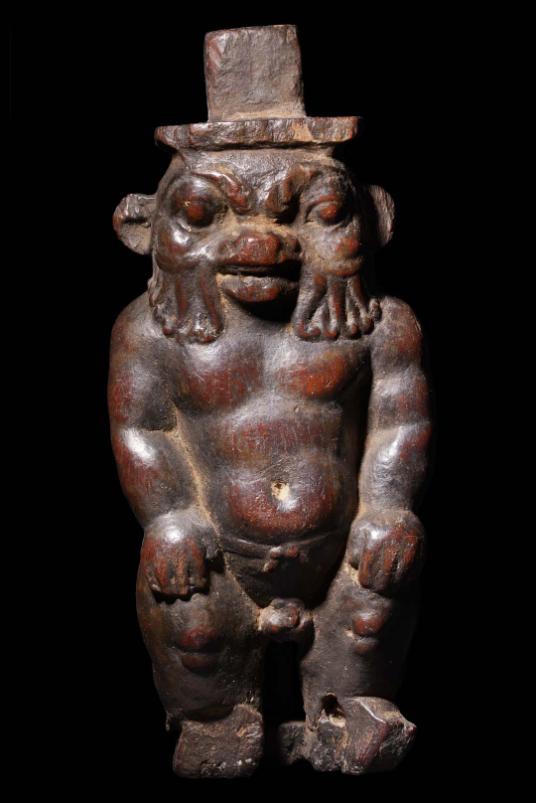Manifestations of Power
The terrifying power of the lion makes it an obvious choice to represent a powerful divine force. The god Apedemak was one of the most important deities in Meroitic culture in Sudan, with connections to the living king. In Egypt, Sekhmet was a vengeful force, who once attempted to wipe out humanity. By contrast, the god Bes was seen as a protective god, defending people against evil spirits.
Sandstone statuette of a lion. The rich orange colour is highly distinctive and typical of Meroë sandstone. Lions were important in Meroitic culture as they represented royal authority and power. Meroë, Sudan; Meroitic Period (542bc-350ad). E.8523
Faience amulet in the form of a lion. Egypt; Late Period-Ptolemaic Period (664-30bc). E.608
Faience amulet of the goddess Sekhmet, in the form of a lion-headed woman. Egypt; Late Period (664-332bc). E.9011
Wooden figurine in the form of the god Bes, shown as a dwarf with the head of a lion. Bes was known as a protector of households, and particularly mothers, children, and childbirth. Egypt; New Kingdom-Roman Period (1550bc-390ad). E.8136

Image by Julia Thorne, Tetisheri
Stone amulet in the form of the god Bes, wearing an elaborate plumed headdress. Bes later took on a more general protective function and became more widely associated with fertility, sexuality, and war. Egypt; New Kingdom-Roman Period (1550bc-390ad). E.9004
Previous: Animals and the Divine
Next: Animals as Avatars